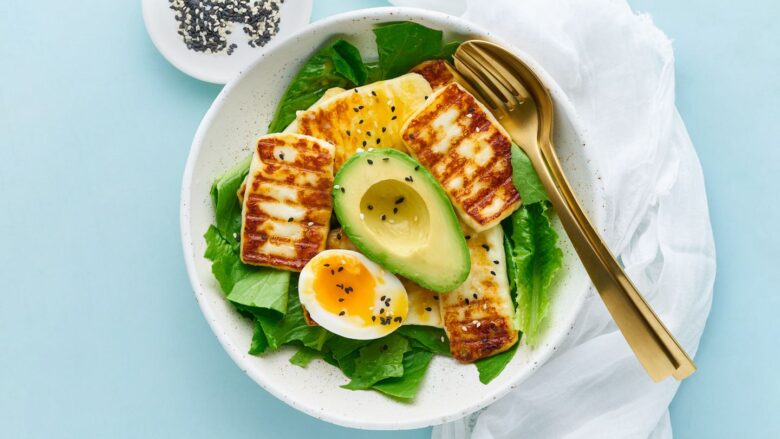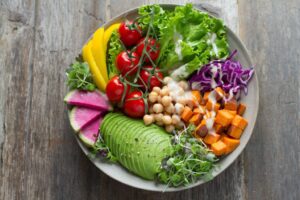Want to Change Your Life with Keto? This low-carb diet has captivated the health and fitness industry, promising remarkable outcomes for those who adopt it. If you’re looking to lose weight, gain energy, or change your eating habits, learning about the keto diet plan can change your life for the better. What does this mean? Let’s discuss how to create a keto diet plan that fits your lifestyle and maximises results.
Learn the Basics of the Ketogenic Diet
The ketogenic diet induces ketosis through a low-carb, high-fat diet. In this metabolic state, fat is burnt instead of carbs. People often limit their carbohydrate intake to 20-50 grams per day. This allows the liver to use the fat to produce ketones.
The main source of energy is healthy fats. The ketogenic diet consists of avocados, almonds, seeds, and olive oil. Protein is important but should be consumed in moderation. Sources include meat, fish, eggs, and dairy. Understanding how these macronutrients interact is essential for a balanced diet and physical adjustment. What are the results? This new diet can boost your energy and mental clarity.
Benefits of the Ketogenic Diet Plan
A ketogenic diet can improve your health. One major benefit is weight loss. Ketosis causes your body to burn fat instead of carbohydrates for energy. This provides quick results and is loved by many. Ketones can also improve mental clarity. Many people who follow a low-carb diet find that they can focus better and experience less brain fog.
Another benefit is that you have a steady amount of energy throughout the day. Unlike a regular diet, a ketogenic diet provides sustained energy without causing blood sugar levels to drop. Many people find that eating more fat reduces hunger. Feeling full can reduce unhealthy snacking and improve portion control. Some research suggests that lowering cholesterol and triglycerides can improve heart health.
Custom Ketogenic Diet Plan
A personalised ketogenic diet plan starts with understanding your needs. Take into account age, weight, activity, and diet. Then, determine your optimal macronutrient ratio. The ketogenic diet emphasises lipids (70-75%), moderate protein (20-25%), and very few carbohydrates (5-10%). Change these numbers to fit your goals.
Choose avocados, nuts, seeds, fatty fish, eggs, and leafy greens for a keto-friendly diet. Varying your meals can make food more interesting and satisfying. Make sure you have snacks on hand. A handful of nuts or slices of cheese can help curb hunger pangs between meals. Be flexible. Don’t worry if every meal doesn’t go as planned—that’s just life. Focus on your health journey and adjust your plan as needed.
Ketogenic Diet Sample Week
Planning meals can help people on a keto diet stick to their eating plan. Use this simple sample plan to get started. For breakfast, try scrambled eggs with butter and avocado. This combination can keep you energised all day long and reduce your carb intake. A refreshing salad with vegetables, grilled chicken, feta cheese, and olive oil dressing can be served for lunch. It’s filling and filling.
Dinner can consist of roasted fish with herbs and steamed vegetables with a lemon glaze. This meal contains healthy fats and protein. Don’t forget to snack! Almond or full-fat Greek yoghurt are great foods to eat during the week. Prep meals on Sunday to simplify your daily tasks. Once everything is ready, you can easily implement your plan. Variety is what makes keto life so exciting.
Tips for a Successful Ketogenic Diet
Make sure you stay hydrated. The ketogenic diet requires water to flush out toxins and maintain energy. It is recommended to drink eight cups a day. Choose whole foods. Choose fresh produce, high-quality proteins, and healthy fats. This approach can increase nutrient intake and reduce food cravings. Macro monitoring. Track your carb, fat, and protein ratios through an app or journal. Adjust your diet to maintain ketosis.
Meal prep is important. Prepare meals ahead of time to avoid hasty decisions that can hinder progress. Cook in bulk and save snacks for busy days. Pay attention to your body’s signals. Fatigue or irritability can be a factor during the transition period.
Conclusion
The ketogenic diet can change your life. It’s a lifestyle change that goes beyond dieting to increase energy and mental clarity. Enjoy delicious food while achieving your health goals with the right nutrition. A varied diet is easier to achieve balance and satisfaction.
Be flexible with your meal plan. New dishes ensure you continue to enjoy your meals and don’t get bored quickly. Community support boosts motivation. Sharing obstacles and experiences can make the path easier. Remember that everyone is unique. What works for one person may not work for another. Listen to your body while improving your health.
FAQs
1. Can I do a ketogenic workout?
Absolutely! Many people feel more energetic after burning fat instead of carbs. Trust your body and adjust as needed.
2. Reaching ketosis: How long does it take?
Everyone’s body is unique. Some people enter ketosis within 2 to 4 days of starting a diet; others take longer, depending on activity level and metabolism.
3. Is intermittent fasting recommended for a keto diet?
Intermittent fasting and a keto diet can promote fat loss. However, it is important to get enough nutrients during eating periods.
4. Will I experience side effects from starting a keto diet?
As your body adapts, you may experience the “keto flu”, which makes you feel lethargic and develop headaches. Drinking enough water and taking in enough electrolytes can help reduce these effects.
5. Can people on a keto diet drink alcohol?
Yes, but choose carefully! Choose low-carb beverages, such as dry or sparkling wine, instead of sugary cocktails or beer.
6. What foods should you avoid on the ketogenic diet?
Bread, pasta, rice, sweets, and certain types of fruit contain a lot of carbohydrates. Avoid grains and starchy vegetables.




